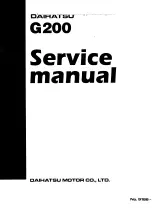
The yellow indicator lamp goes out if reverse
gear is engaged. Active Blind Spot Assist is
not operational.
The brightness of the warning lamps is auto-
matically adapted to the brightness of the
surroundings.
Visual and acoustic collision warning
If you switch on the turn signals to change
lanes and a vehicle is detected in the side
monitoring range, you receive a visual and
acoustic collision warning. You then hear a
double warning tone and red warning lamp
:
flashes. If the turn signal remains on, detec-
ted vehicles are indicated by the flashing of
red warning lamp
:
. There are no further
warning tones.
Course-correcting brake application
If Active Blind Spot Assist detects a risk of a
lateral collision in the monitoring range, a
course-correcting brake application is carried
out. This is meant to assist you in avoiding a
collision.
G
WARNING
A course-correcting brake application cannot
always prevent a collision. There is a risk of an
accident.
Always steer, brake or accelerate yourself,
especially if Active Blind Spot Assist warns
you or makes a course-correcting brake appli-
cation. Always maintain a safe distance at the
sides.
If a course-correcting brake application
occurs, red warning lamp
:
flashes in the
exterior mirror and a dual warning tone
sounds. In addition, display
;
appears in the
multifunction display underlining the danger
of a side collision.
In very rare cases, the system may make an
inappropriate brake application. An inappro-
priate course-correcting brake application
may be interrupted at any time if you steer
slightly in the opposite direction or acceler-
ate, for example.
The course-correcting brake application is
available in the speed range between 20 mph
(30 km/h) and 120 mph (200 km/h).
Either no braking application, or a course-
correcting brake application adapted to the
driving situation occurs if:
R
there are vehicles or obstacles, e.g. crash
barriers, located on both sides of your vehi-
cle.
R
a vehicle approaches you too closely at the
side.
R
you have adopted a sporty driving style with
high cornering speeds.
R
you clearly brake or accelerate.
R
a driving safety system intervenes, e.g.
ESP
®
or PRE-SAFE
®
Brake.
R
ESP
®
is switched off.
R
a loss of tire pressure or a defective tire is
detected.
220
Driving systems
Dr
ivi
ng
an
d
parki
ng
















































